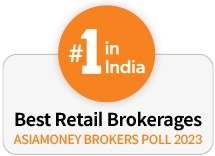In this blog post, we will guide you through the basics of trading in F&O, how to do F&O trading and F&O trading tips to help you get started. So, let’s get started.
What are Futures and Options?
In an options contract, an investor is allowed to sell or buy stock at a specified price, but they do not have the obligation to exercise such right. This is possible due to the validity of the contract at any time. Alternatively, in futures contracts, the buyer needs to buy shares (and the seller must sell) on a particular date at some time in future, with the exception of when that position is closed prior expiry date.
Financial investors use both futures and options as investment products to either gain returns or offset losses on existing investments. They permit investors to purchase assets at a set price by the end of an agreed period and time. Nevertheless, the ones for these commodities operate and are risky differently.
What is the Difference Between F and O Trading?
Futures Trading | Options Trading |
Involves an agreement to buy or sell an asset at a predetermined price on a specified future date. | Involves the right (but not obligation) to buy or sell an asset at a predetermined price on or before a specified future date. |
Requires the buyer to purchase the asset and the seller to sell the asset at the agreed-upon price on the expiration date. | Allows the buyer to decide whether to exercise the option or not, depending on market conditions. The seller must fulfill the obligation if the option is exercised. |
Offers the potential for unlimited gains and losses. | Offers limited risk for buyers (the most they can lose is the premium paid for the option) and unlimited potential gains. Sellers face unlimited risk. |
Typically used for hedging purposes to manage risk associated with price fluctuations. | It can be used for speculation, hedging, or generating income through premium collection. |
Requires a smaller initial investment compared to buying the underlying asset outright. | Requires payment of a premium, which is typically a fraction of the cost of purchasing the underlying asset. |
Trades on organized exchanges, such as the Chicago Mercantile Exchange (CME) or the Intercontinental Exchange (ICE). | Trades on options exchanges, such as the Chicago Board Options Exchange (CBOE) or the International Securities Exchange (ISE). |
How to Trade in F&O?
1. Click on Open Trading Account
The most important stage is to register an account with a reputed broker. A trading account serves as a go-between you and the market, facilitating buying or selling contracts. So, select a broker with reasonable remuneration who also has established market credibility.
2. Conduct full KYC and other similar norms.
Upon choosing a broker, you will be obliged to undertake the Know Your Customer process. This is done by uploading your identity and address proof along with other personal details. It is a once-off process, and you can start trading immediately after.
3. Learn the Terminologies
F&O trading has its unique terms, which you need to know before engaging yourself in it. Among the common ones are a margin, lot size, strike price and expirations. Be conversant with these terms to avoid any confusion when placing trades.
4. Conduct research and analyze the market.
Trading in F&O carries a great amount of risk and accordingly is essential to know the huge sort of work when executing any trade. Watch out for the market trends, news and company developments that might influence price fluctuations of the underlying.
5. Devise a Trading Strategy
The reason why the F&O traders need to have a trading strategy is simple- without one, no success in this sphere of business. It entails the stipulation of profit objectives, cut-loss levels as well as a risk management plan. So, adhere to the plan and do not make hasty decisions guided by feelings.
6. Start F&O Trading
After the fulfilment of all procedures, trading might begin. Start with modest amounts and ever so slowly increase your risk level as you learn by doing the market.
The Bottom Line
Trading in F&O can be a lucrative opportunity for investors who are willing to take on higher risks. However, it is not a get-rich-quick scheme and requires patience, discipline, and continuous learning to succeed. We hope this beginner's guide has given you a good understanding of F&O trading and has motivated you to take your first steps towards it.




